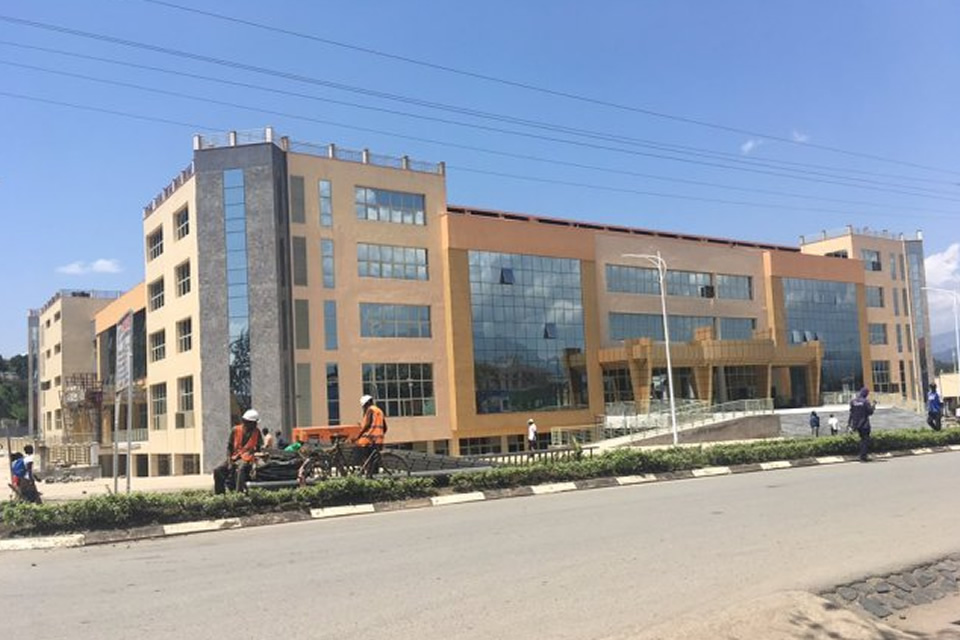
Musanze: Reaping Benefits of Surging Gorilla Tourism
Musanze district is the hub of Rwanda’s tourism industry and a source of many adventures. It has a long list of adventure activities on offer.
However, as Joseph Ondiek writes, when the spotlight is put on adventure, most people will immediately think of the iconic mountain gorillas. And this would be right since the primates have positioned themselves as Rwanda’s flagship tourist attraction.
But there are other must-see attractions in Musanze, such as the Musanze Caves, as well as other animals that reside in the Volcanoes National Park Rwanda. There is also the historic Buhanga Eco-Park, which was a sacred forest where Rwandan kings performed initiation ceremonies.
Musanze, Rwanda’s tourism hub
Over the past few years, Musanze district has been striving to live to its image as a tourism hub, with different economic sectors registering varying degrees of success and this has also come with improvement of people’s lives.
The new district mayor, Jean Damascene Habyarima, says Musanze has the potential to grow economically and together with the district staff and residents, they are going to continue working to move the district forward, which will vindicate the its claim as the heart of the tourism industry in Rwanda.
In terms of its tourism potential, Musanze district is home to the unique and world famous mountain gorillas which attract nearly 30,000 tourists every year from all over the world. Musanze’s capital, Ruhengeri, is one of the largest cities in Rwanda and serves as a hub for tourists.
The tourism scene in Musanze
According to Greg Bakunzi, the managing director of Musanze-based Amahoro Tours, there have been tremendous improvement in infrastructure in Ruhengeri town and many investors in the hospitality industry have constructed first class facilities like hotels to cash in on the growing tourism activities in the region.
“When we started, there were only four top hotels in Ruhengeri. This number has significantly increased over the last few years, and we now have brands like Silver Buck Hotel, Gorillas Volcanoes Hotel in Kinigi, Snow Hotel, Red Rocks Hostel Rwanda, Lake Ruhondo Lodge and Tented Camp and many more offering both luxurious and back-packing accommodation to tourists in Ruhengeri.
Bakunzi adds that the 2016 opening of the Dian Fossey Museum, named the Karisoke Exhibit, has also been a major development in the tourism industry in Musanze since the museum is deeply connected with the conservation of the mountain gorillas. The museum is the brainchild of the Karisoke Research Center, which is run by the Dian Fossey Gorilla Fund International (DFGFI), an international gorilla conservation organisation.
“Many tourists who come here now know the efforts it took to preserve the endangered primates, and the museum also serves as resource center for the local community to learn about the importance of conservation, particularly around the Virunga massif that straddles Rwanda, Uganda and Democratic Republic of Congo (DRC).
New buildings, roads
Bakunzi adds Musanze’s position as a tourism center was further boosted with the construction of Kinigi Community Commercial Center (KCCC) whose main mission is to help the local people develop interest in commercial enterprises, particularly the rural communities living in the areas bordering the Volcanoes National Park.
Since it opened its doors in 2013 in Butorwa 1 village, KCCC has been a home to 12 local cooperative members mostly selling handcrafts and clothes to tourists who visit the parks, and providing the opportunity for the locals to be gainfully employed. The center is brainchild of a consortium of organizations seeking to conserve the environment around the parks.
Bakunzi observes that over the years, Musanze’s position as the country’s tourism hub has seen development of several modern buildings and rehabilitation of the old ones.
“The construction of the Musanze Modern Market, Rwanda Social Security Board, and the rehabilitation of the Musanze Bus Park all has given Ruhengeri town a new metropolis look, and the town is now regarded as second to Kigali in terms of infrastructural development,” says the tour operator.
Jeanne Uwamahoro, a resident of Musanze town, says Musanze is now paralleling Kigali when it comes to cleanliness, adding that it’s refreshing to observe that its streets are now daily swept and plants planted along the streets to spruce up the image of the town as a green town.
“It’s also noteworthy to observe that for every new road constructed, there’s installation of street lights along the roads, and the town is now becoming a secure place to walk even during the night,” says Uwamahoro.
Her view is supported by Bakunzi who says, for example, the newly tarmacked eight-kilometer road leading to Buhanga Eco-Park is installed with street lights.
“The roads leading to the Volcanoes National Park has been paved, and the park has been fenced to prevent human-wildlife conflicts that was rampant before, and this has created peaceful co-existence between humans and animals,” says Bakunzi.
Read More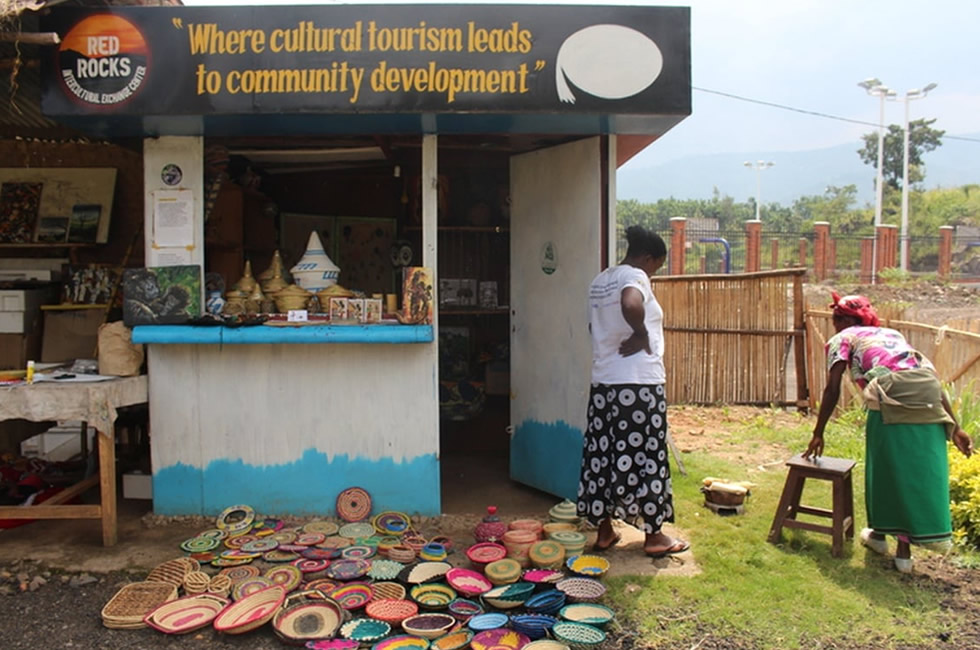
Red Rocks Wins Best Community-Based Tourism Award
The annual Rwanda Tourism Gala was held on December 21, 2018, at the Kigali Marriott Hotel. During the event, several tourism industry players spanning different categories were recognised and presented with awards for their achievements in the industry this year.
In her keynote address during the ceremony, Ariella Kageruka, the director of the Rwanda Tourism Chamber, said Rwanda’s tourism industry has seen tremendous growth during the past years despite some challenges that it faces, which she added they are trying to mitigate so that the industry retains its enviable position as the country’s leading foreign exchange earner.
“This award ceremony is to recognise individuals and organisations, big and small, who have played their part to ensure that Rwanda’s positive image as a top tourist destination in the region is maintained. This will spur them to come up with more innovative solutions to continue attracting more tourists to the country,” she added.
The award winners included Akagera National Park that was awarded for Sustainable Park of the Year, Red Rocks Cultural Center for the Best Community-Based Tourism Organisation of the Year, Radisson Blu, Kigali for Conference and Events Venue of the year. Others were Akilah Institute that was awarded for Outstanding Achievement in Hospitality and Tourism Education, Fuchsa Bar and Lounge scooped an award as the Bar of the Year, the Tourism Business of the Year went to Alpine Travels while the Health and Spa Facility of the Year was awarded to Scray Spa Kigali.
Speaking at the sidelines of the event, Greg Bakunzi, the founder of Red Rocks Cultural Center, said he was excited that his organisation was awarded as the based community-based tourism organisation of the year, adding that the recognition has given him more impetus to continue coming up with more innovative solutions for the local communities living around the national parks to also gain from the tourism industry.
Bakunzi added that they could not have achieved the feat without the tremendous support of the local community and their partners, saying working together with all these groups have made sure that vulnerable families living around the protected areas can now have sustainable income to support their families, while they are also able to take part in initiatives geared towards environmental conservation, mostly around the Volcanoes National Park in Rwanda.
“We are looking forward to more of such awards and recognition since we are dedicated to continue supporting community-based initiatives that are meant to uplift the living standards of the local communities, which also has a major stake in the tourism industry and conservation of the wildlife habitat,” added Bakunzi.
The award ceremony was a culmination of months of voting where the Rwanda Tourism Chamber invited the public to vote for nominate and vote for individuals, organisations and companies that have made positive contributions to Rwanda’s tourism industry this year. They ranged from national parks, hotels and restaurants, community-based organisations to individuals like drivers, rangers, and tour guides who were also awarded for their efforts.
The Rwanda Tourism Chamber head said the Rwanda Tourism Industry Award gala will continue to award those individuals and organisation to motivate them to come up with viable solutions to mitigate the challenges that the industry is facing.
Read MoreMusanze Gears up for Christmas Village Market
A group of women are sitting huddled next to each other as they weave basketsand chat among themselves. It is in the afternoon, and it has just rained somehalf an hour ago, so the air is still cold and misty.
However, such an uncompromising weather does not dampen their spirits. Sitting on a large mat, the six women continue to furiously make different traditional handicrafts, which they hope will make them have a merry Christmas this time round.
In front of them are displayed different traditional handicrafts they have managed to make today: mats, baskets, gift cards, small pots, clothes, sandals and shoes; all made from traditional materials.
Just a few meters away, the sounds of traditional African drums can be heard. A group of children, youth and men are singing and dancing to the symphonic beatings of the drums by the drumsticks, but the sounds can be cut off after every some few minutes and would attentively listen as their leader, who is their trainer, teach them some aspects and moves of the songs and dances.
They are practicing since in just a few days, they should have polished their traditional music and dancing skills to be able to showcase to visitors who are expected to throng their village during this festive season.
The group of weaving women and dancing children, youth and men are expected to showcase their different skills during the 12- day Christmas Village Festival that will officially kick off on 22 December 2018 and end on January 1, 2019. The cultural fiesta is going to happen at Red Rocks Cultural Center in Nyakinama Village, Musanze district.
The main aim of the festival is to connect the locals with tourists and the theme is to display different shades of Rwanda authentic traditional and cultural life.
Greg Bakunzi, the founder of Red Rocks, says they have been holding Christmas Village Party for seven years now, and its main agenda is to provide the local community an opportunity to sell their products and skills to visitors who are going to come to various establishments like Red Rocks during this festive season.
“This is the end of the year and these women are going to have the opportunity to sell their products at discounted prices to clear the stock they have and make way for the new products they are now making that will also make part of their next year’s collections,” says Bakunzi.
Bakunzi adds that the 12 days is going to be a marketing blitz for the locals, and will also give them the chance to sell some of their traditional products to tourists who purchase them mostly as souvenirs and gifts to their loved ones.
“The locals will also take this opportunity to showcase their music and dancing skills throughout this period, since we want to make our visitors to have that festive environment when they come here during this festive season. This is going to be provided by our traditional dancing troupe,” he adds.
Apart from selling their handicrafts, other activities expected to rock the festivals include preparation of traditional Rwanda cuisine, demonstration of how to make the traditional banana beer, story telling by the sides of the campfire, interaction between the locals and the tourists, and playing of various traditional and modern games.
The festival, according to Bakunzi, is meant to showcase Rwanda traditional culture to tourists, to make the locals gain from their talents and skills and to create an atmosphere where people of
different backgrounds are going to converge and learn from each other.
Bakunzi further says that since its inception, the Christmas Village Party has fostered mutual cultural understanding among the tourists and locals, and has also provided an avenue through which the locals can now gain from thriving tourism around the Volcanoes National Parks in.
“Most of these women and youth come from vulnerable families. Some of them don.t have husbands to take care of their families. Most of the time, they rely on their small farms for subsistence farming but this is not enough to cater for all their basic needs. But when they use their art and handicraft skills and make products that tourists can buy, then they are able to supplement their resources and help uplift their livelihoods,” says Bakunzi.
For Jeanette Mushekimana, a 39-year-old widow and mother of three, she says that she has been selling her products at Red Rocks Rwanda and in Musanze town and hopes that the coming festival is also going to help her make money from her products and enjoy the festive season with her children just like the rest.
“I have made over ten different products I hope to market during the festival. I will sell the products that I had made this year at discounted prices and hope that next year, I will manage to sell all
the products I am currently making,” she says.
Mushekimana adds that she is also going to make traditional food during the festival and if opportunity comes take some of the visitors to her home to show them how Rwanda rural families go about their daily lives.
Theophille Kamana, a traditional herbalist is also busy making healing concoctions that he hopes to display during the festival, adding that even though people now resort to modern cure when they are ill, traditional medicine still have a place for its curative values
Read More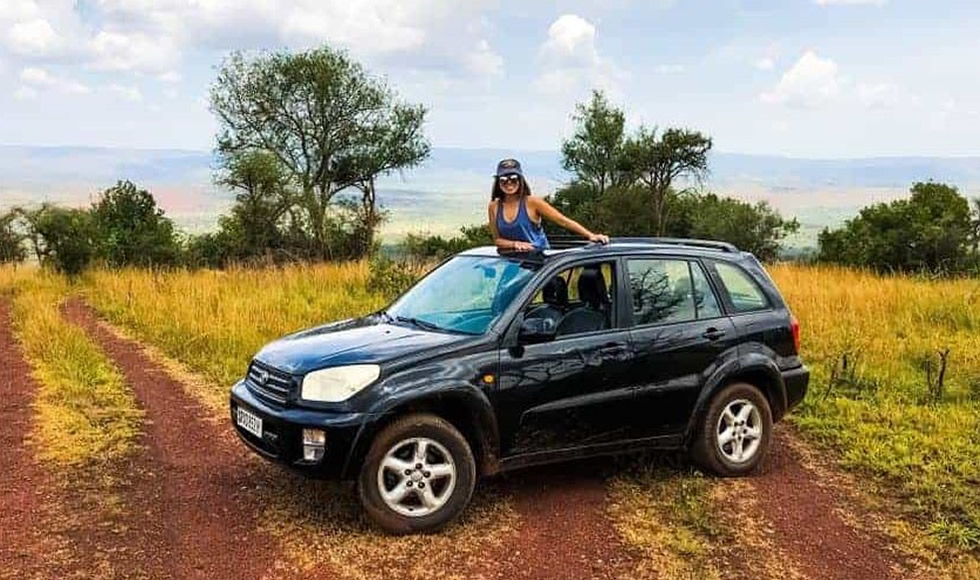
Planning a Budget Holiday in Rwanda
Often traveling is viewed as an expensive venture and its true especially when you don’t plan in advance and consulting reliable sources such as local travel Agencies. But if you plan like Budget travelers, you can still find excellent value for your money and time in Rwanda. Many budget lodges and hotels have been built in different tourist destinations in Rwanda to cater for the demand of all budget travelers to the country. Besides many group tours are also organized for the same cause by different Rwanda tour operators every day to different tourist attractions in different locations. Joining others on a group tour reduces the price that one would have paid alone & also enables tourists to meet new friends, save and enjoy their trips since such trip are for people of the same interest. This arrangement also helps the back packers to fulfill their travel dreams by spending less just in line with their budget.
Most affordable Rwanda safaris cost $500-$950 per person with duration of 3 days all inclusive though still possible for you to do a Rwanda budget tour without feeling the pitch of the total tour price. Bargain with your local travel expert, gather enough information and if all fails step out of your comfort zone and hit the road on your own. Most budget trips are always successful especially when you target low season windows when accommodation and transport is priced low for companies to mitigate their operation overhead costs.
Rwanda low season
April, May and November are the considered months of the low travel season in Rwanda. During this time the country experiences some rains though it normally shines just after and the demand is kind of low for lodges/hotels, and most tour operators have no business running which makes all the tours affordable and cheap. If you have a high bargaining power, then express your interest of a Rwanda cheap tour during this season. For Backpackers lodges/hotels offer low prices to their guests during this season which can even go lower if you request for extra discount.
If you want to track the mountain gorillas, the Rwanda Development at times discounts the gorilla permits during the low season. The Rwanda tour operators are always up to date with all changes in the tourism industry please contact them for more details. Also group tours are more cheap & affordable to many travelers but still comfort and full of valued services, for example Rwanda city tours cost only $ 50 per person per day making Rwanda the best low season destination in Africa.
Affordable safari accommodation
Rwanda has several cheap lodges/hotels/hostels which cater for the tight budget travels. All guests who book budget tours stay in these lodges and all have interacted with say the budget accommodation facilities are worth the cost. When you chose rightly your budget lodges , which is only possible after making a very go research including the lodge reviews . Don’t use new lodges where no one has ever tasted the lodge services and facilities to avoid disappointments of meals, the room service or other facilities. Sleeping in cheap accommodation will help you save and also spend less as planned initially before embarking on your trip. Bargaining is the order of the day since getting the best price in Africa depends on your bargaining power. Take a look at some cheap lodges/hotels in Rwanda Okapi hotel, Impala hotel, Gloria hotel, Silver Motel, Gorilla city centre hotel, kinigi guest house, Step town hotel, Labana star hotel, Gorilla lake view hotel among others.
Cheap Transport option
Ensure that you use the cheapest transport option possible depending on where you want to go. Rwanda has many cheap transport means of transport, public taxi’s/ bus coaches, cheap car hire services. Some times its good to walk some distances where possible and save. If you want to transfer to another city or to any tourist destination, always inquire from your lodge of residence for details. However no need for this if you travelling around on a tailor made trip with all arrangements made by a tour operator Remember to take care of all your properties especially the travel bag though the country security is good but you never know someone might take off with your luggage which may disorganize your travel plans.
Read More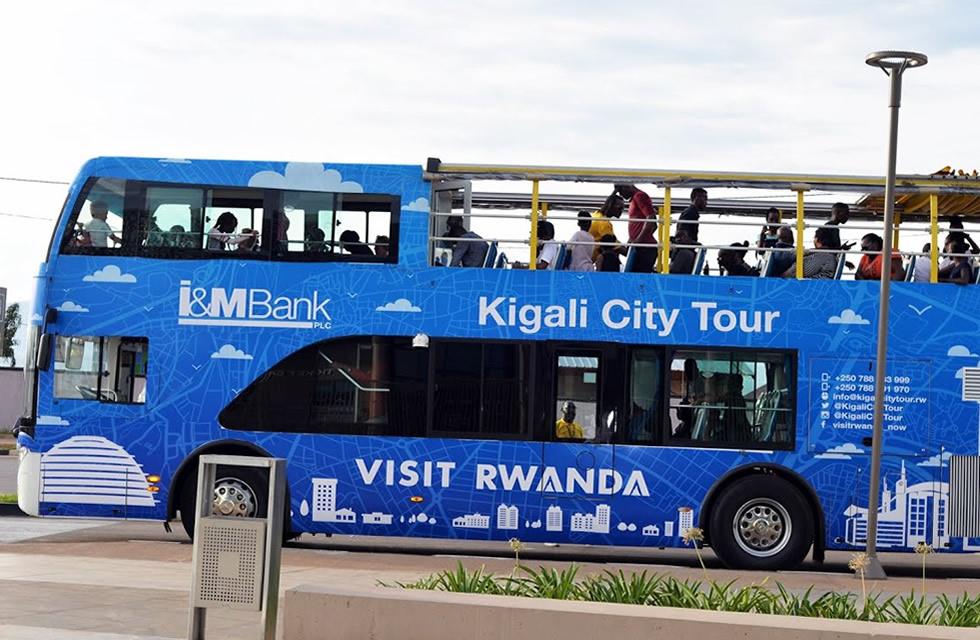
Go On Kigali City Tour While on Safari in Rwanda
Don’t miss out a city tour in Kigali in case you chose a Rwanda safari. Kigali is the largest and capital city of Rwanda with very many attractions; it’s the heart of Rwanda where all business centers, port entry and international airport (Kanombe international) are located. This beautiful ever green city become a capital city after independence in 1962 and it was founded by Dr.Richard Kandt the first German colonial resident of Rwanda in 1907.
The city is built on a hilly area since Rwanda is a mountainous country it is referred to as the land of a thousand hills. Its nearness makes it easy to drive from the capital to the most of the tourist attractions in Rwanda and it’s just about 7kms up to the Rwanda international airport. Currently Kigali is regarded as one of the cleanest, safest and friendliest city in Africa attracting gigantic visitors and investors whole over the world. Right from the airport you will be welcomed by hospital people even when in the forest you will be guided by friendliest guides who will handle you with a lot of care.
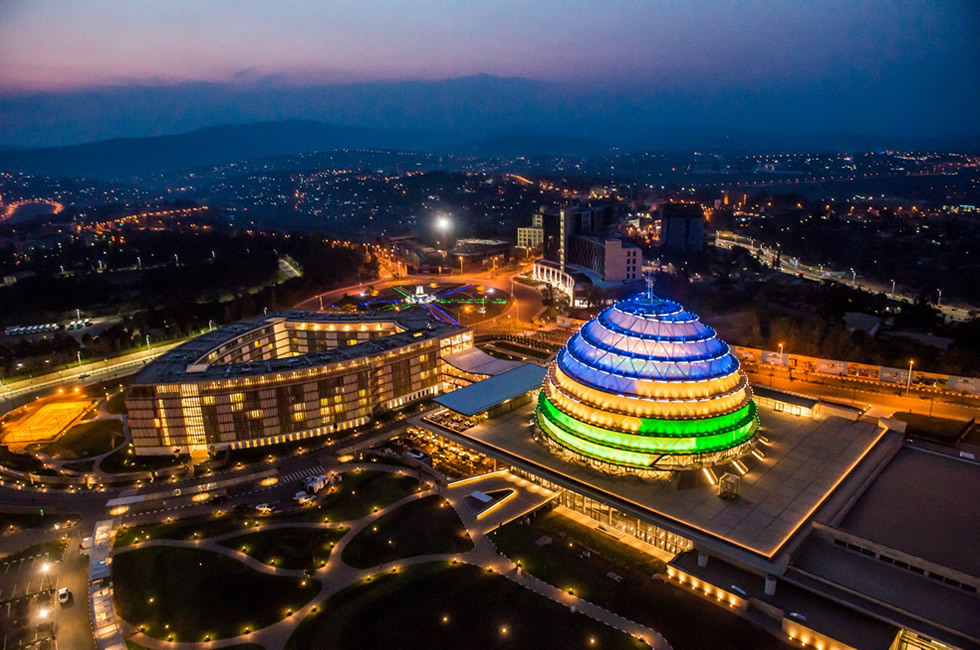
When in Kigali, You can’t even remember that ounce it suffered much during the 1994 Rwanda genocide where a very big number of people lost their lives including the Tutsis and Hutu and a few who survived from this horrific war took refuge to neighboring countries.
Although damaged during this tragedy war, the city’s structure has recovered. It hosts a very big number of tourist attraction which are very difficult to miss if in Kigali they include; Kigali genocide memorial site which houses a lot of information on how this war started and ounce you visit this genocide memorial site you will still see peoples bones, cloths, watch still laid on the ground, you will feel tears coming from throats, visit the Hero’s Cemetery at Amahoro National Stadium, visit also the pottery project of the Batwa, Coffee shops, bars and local and international restaurants ranging from Chinese, Italian, North African, visit also the market places visit many other interesting places in Kigali.
Read More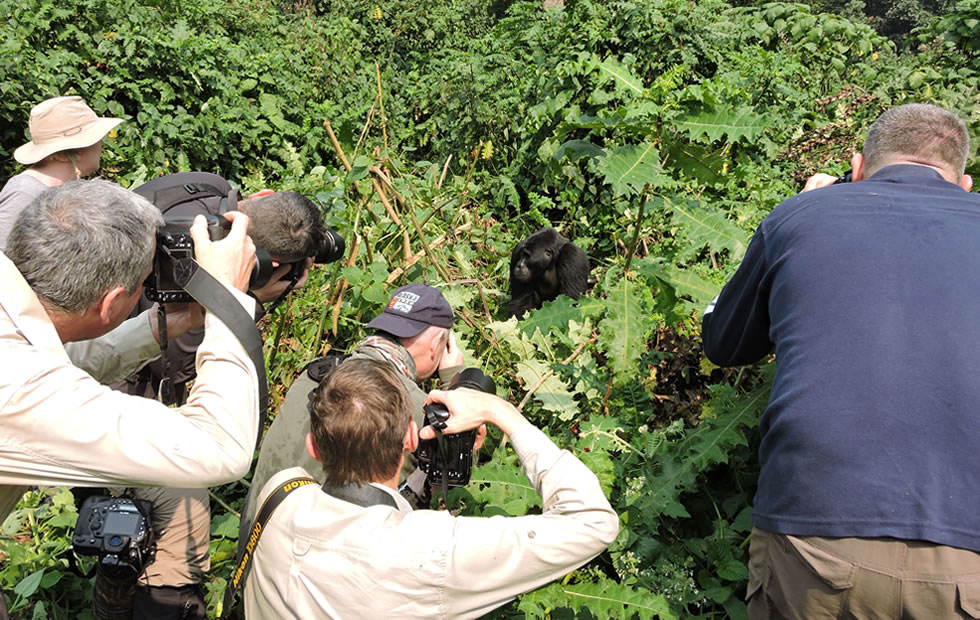
Tips for An Unforgettable Gorilla Trekking Experience
As interesting putting food in the mouth, gorilla tracking is one of the safari activities that is not isolated or missed by tourists when they are having a safari of their lifetime as this activity can’t be missed in menu of the various activities they want to explore which will bring you closer to related human beings. Some of the Gorillas families that are tracked include the following: Susa made up of 41 gorillas, Sabyingo, Amahoro etc. Just like in other countries like Uganda, where Gorilla tracking is done in Bwindi Impenetrable National Park and in Democratic Republic of Congo (DRC), it is done in Virunga national park. For Rwanda, it is done in volcanoes national park which is located in the northwest of Rwanda considered to be the only national park where gorilla trekking can be done. Primate tracking in Rwanda is done by various touring companies as the packages for this tracking ranges from 2 day Rwanda Gorilla Trek to 12 day Rwanda Safari which gives a wide variety of Gorilla groups to be trekked.
More so, to even start trekking these so called primates in volcanoes national park, a tourism permit must be issued by the body concerned with tourism called Rwanda tourism board. This gives license to the tourists of which type of gorillas to be trekked at that moment. Permits for Rwanda Gorilla Trekking goes for around 750 dollars per day of which some bid of the money goes to the communities around the national park for development and well being of people around it. A primate tracking is most suitable in the dry months of June to September and also December, January and February making this activity easier than ever before as you will see below.
Although Gorilla tracking in volcanoes national park starts from 20 minutes to three quarters of the day in the evening, their some requirements that are needed to do this activity as tourists will go through a couple of challenges like rain, muddy soil, insects e.g. aunts which needs some bid of wearing strong shoes etc. These are some of the requirements needed to trek this amazing Gorillas are as follows.
Tip number one is dressing according to the Safari activity. Wear shirts made of synthetic material which tend to dry faster. This is due to the fact that in most cases, this activity may be done in the rainy season which needs some bid of drying faster to make the tourist more comfortable. Their after you are advised at the bottom to wear long pants made of synthetic material which also tends to dry faster than other type of clothes making the Safari more sweet and affordable to do . The other clothes like short jeans will make the activity more difficult to do as they will make the tourist uncomfortable and unable to walk properly.
Wear proper foot wear(boots) that is reaches above the ankle, this is because while moving though this good scenery of tropical forests, there will be thorns, sticky plants that may endanger the lives of the tourists most especially the legs. This will help you to move though the muddy soils, dangerous insects like the aunts that are of a danger to the lives of the human beings. On top of that, wear gators over those boots so that you can cover the remaining space which might be used to enter other staff like water making the tourist unreliable to do. On top of that wear high rubber willies with treads on the boots.
Pack enough food and water before you come for this activity as it mostly takes you a long period of time from morning to the evening hours during the dry months of June to September. This may be in form of snacks, a bottle of water most especially a liter is enough for the all day and it is advisable for one to bring these items along with him or herself after all some companies do provide some food to the tourists before proceeding to national park. When you have reached the park in side, you are not allowed to give any food to these gorillas which might endanger the life span of these primates.
Speak about your trekking preferences meaning that you as the tourist will have to communicate to specific company you had booked with to inform them about your fitness level and other diseases you may be facing plus also what type of Gorilla you might want to see first. This enables the guide to assign you to a group that is in with your range which you can afford to do as some of tracking groups may even track within or just outside the national park.
Making sure that video camera is working in good conditions and already for use. The first thing is to put in mind is that light from camera shouldn’t be there as long as it does not disturb the movements of the so called primates. These photographs which are made tend to be of a darked exposure because of the so many trees that are situated in the park more so a camera should be kept in a water proof bag so that water does not disturb its settings
Go for Gorilla tracking activity in a dry season is other tip for gorilla tracking meaning that the best months for Gorilla tracking are from June to September and also from December, January and February as these months tend to be dry because in the dry periods, movements of people within the park is much easier than ever before plus also cars are able to move in those roads drive safely. And that is why tourists are advised to come in the dry months although; they can also come in any period of the year. The wet months include the following march, April, May etc.
Practice Gorilla etiquette meaning that you should start and learn to respect the environment of these primates such as their behavior and knowing that you a visitor to them. Don’t be afraid to these primates as they are close friendly to the human beings. More so if they approach you, don’t just run for hide out as they think that you have stolen something from them which marks in the end of the tips for gorilla tracking in Rwanda.
Read MoreEmmanuel Tutu: Football Star, Visual Artist and Philanthropist
For Emmanuel Tutu, using art as a medium to benefit the wider society is a divine calling. As Joseph Ondiek writes, Tutu is using a percentage of his art sales proceeds to help Rwandan children to get education and to also buy health insurance poor women.
“I believe that everybody should use his or her talent, a God-given gift, to right what’s wrong in society. I identified the education of children, particularly girl-child education, as my priority area and now I have many of them I have put through education,” Tutu told Chwezi Traveller in an interview in Kacyiru, a Kigali suburb.
Tutu says it’s the travails of his parents that set him on the path of philanthropy. His parents escaped to the Democratic Republic of Congo (DRC) in 1959 during the volatile period of that time. There were sporadic ethnic conflicts pitting the two dominant communities in Rwanda that later culminated in the atrocious 1994 genocide against the Tutsi.
A top-flight footballer
Born in Uganda, Tutu’s early passion was football where he played in Uganda’s top division. But despite that, he always wanted to come back to his motherland after peace was restored. His mother came back to Rwanda 1997.
Tutu’s father died in 1990 and a widowed mother raised the family. His family was composed of seven siblings, five boys and two girls. The mother went back to Uganda but came back in 2005 with some of her children.
As a self-made painter, Tutu says when he came back to Rwanda in 2006, at first he didn’t know what he was going to do for a living. He came back with the family to play football, but after suffering an injury, “we went back to Uganda.”
When he finally relocated to Rwanda in 2006, he managed a music production studio owned by his young brother. The company also was running Narrow Ministry, an orphanage based in Kigali.
Later, he met Innocent Nkurunziza who at the time was a budding painter at Rwanda’s pioneer contemporary art center called Ivuka Art Center in Kacyiru, Kigali, established by renown Ugandan painter, Collin Sekajugo.
Nkurunziza and his brother Emmanuel Nkuranga established Inema Art Center in 2012 where he joined them to become one of the resident artists.
And things have looked up for him since then.
“I have done group exhibitions at the US Embassy in Kigali, the United Nations in Kigali, the Rwanda Museum, Jumelage Rhineland in Kigali and different hotels and restaurants in Rwanda. In 2016, I did an exhibition at Biennale de Dakar Xll in Senegal. I have also been sending my artwork to the United States, Scotland and Speyer in Germany,” Tutu says.
He says that in the recent years, his work has received a lot of recognition. “My deep passion for art, which I started when I was a young boy, has also made me to do philanthropic work such as helping disadvantaged children with school fees to go to school, and buying the coveted health insurance, Mutuelle de Sante, for vulnerable women,” Tutu adds.
A heart for the disadvantaged
He says that he has a big heart for humanitarian projects, adding that he puts aside 20 per cent of the money he gets from selling his art pieces to support schoolchildren and women.
“Part of my sold paintings have contributed to far-flung projects in Home for Love in Haiti, Narrow Ministry Rwanda and my own initiative called Tutu Foundation Ministry, which helps disadvantage families,” he says.
Tutu says while his passion is painting African stories, he draws most of his inspiration from the everyday struggles of women. In fact, most of Tutu’s paintings depict the normal struggles and positive images of how an African woman not only gives life but also nurtures it.
The titles of his work include a 70×40 acrylic on canvas called Proud Woman, depicting an African woman carrying a child on her back. There is also a 100×75 untitled piece showing three women carrying big baskets on their heads, going to the marketplace to sell their produce.
Tutu does abstract, semi-realism art where his pieces also depict
conservation efforts. He says that the image of the African woman is not just giving life. She nurtures life, Tutu argues, and many images of the woman carrying a child on her back, even as she carries on with her domestic duties, have been documented by the artist.
“My work focuses on women to empower them and promote positive things they do to help uplift the institution of the family. I believe that without women, the society is dead,” he says.
Tutu adds that he believes that visual art has a greater role to play in the social, economic and political development of any society. It helps to serve various purposes and, as a form of expressionist art, it has been used as a means of educating and empowering society.
Read More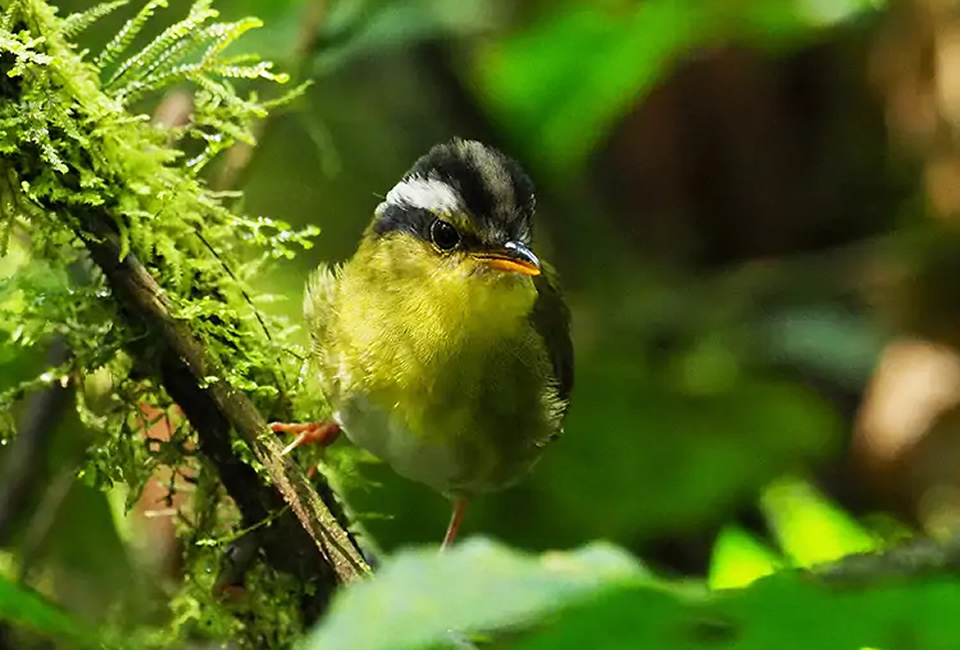
Best Places to Go Bird Watching in Rwanda
Rwanda is blessed to have the shelter of the highest population of birds in the world; it’s also ranked among the best 5 destinations in the entire world for tourists searching for the best birding tour in Rwanda. Rwanda is geographically a small land locked nation perched in the Albertine Rift valley with its dense forested and mountainous nature that avail great and long lasting memorable wildlife experiences anyone wouldn’t want to miss in life.
Rwanda with its small size has a staggering 700 bird species that quench the thirst of anyone looking for great birding safaris and experiences in Africa.
Rwanda has 7 favorite important bird watching areas, which include 3 national parks, – Volcanoes national park, Akagera national park,
Nyungwe national park, Rugezi swamp, Akagera swamps, Nyabarongo and Cyamudongo forest. These birds include Grey crowned crane, papyrus Gonoleck, Kungwe apalis, Bennettis wood pecker, stripe breasted tit, yellow-eyed black flycatcher, Cinnynis, white-tailed blue fly catcher, shoebill stork, tropical Boubou, regular sunrise bird, bronzy sun bird, among others.
Birding At Lake Ihema, Akagera National Park
Akagera national park is a small piece of paradise perched on the Rwanda-Tanzania that provides wildlife safaris in Rwanda that travellers long for. The Park stands as Rwanda’s most spectacular site for birders as it habours several endemic as well as migratory bird species and other unique wildlife species. It is home to over 520 species of birds that dominate this place, including forest, savannah, wetlands, and montane species.
Lake Ihema is home to the rare shoe bill stork; therefore this place gives a clear view of these beautiful birds since it habours a mixture of different acacia and papyrus species, including the olive back.
Other species common in Akagera national park include; the gorgeous black headed Gonolek, the grey hornbill, lilac-breasted roller, the crested barbet, Heuglin’s robin-chat and Ross’s Turaco, among others.
Birding In Nyungwe Forest National Park
This is Rwanda’s most fabulous bird watching site, and it is home to approximately 310 bird species that have been recorded, reflecting a wide habitat diversity and altitudinal range due to its dense forested nature. It’s very famous for its vegetation cover as well as being a home to many different bird species as compared to other national parks.
This wonderful birding area lies west of Butare, with the Butare to Cyangugu road passing straight through the middle, providing excellent roadside birding adventure.
Nyungwe habours a variety of Albertine Rift endemics, including seven of the 12 species of Soricidae, one species of bat – Rousettus lanosus, 5 of 12 species of Muridae and the chameleon Chamaeleo johnstoni, two species of squirrels,- Funisciurus carruthersi and Heliosciurus ruwenzori. And an amphibian that is endemic to Nyungwe – the caecilian Boulengerula fischeri. Two species of butterfly are endemic to Nyungwe – Bebearia dowsetti and Acraea turlini while Papilio leucotaenia restricted to a small area of the Albertine Rift occurs commonly in Nyungwe.
Birding In Nyabarongo River
It’s a protected area in Rwanda, covering 142.62km2, located in the south east of the country, south of Kigali, and includes swamps and marshes in parts of flood plain of river Nyabarongo, the longest river in Rwanda. It provides a safe haven for some of the globally threatened bird species namely; the Madagascar Squacco heron, papyrus Gonolek, Carruthers, Sisticola, white- winged scrub-warbler.
Other places where these birds can be found are; Cyamudongo forest, Rugezi among others, for anyone who wants to get an unforgettable biding experience in Rwanda.
Read More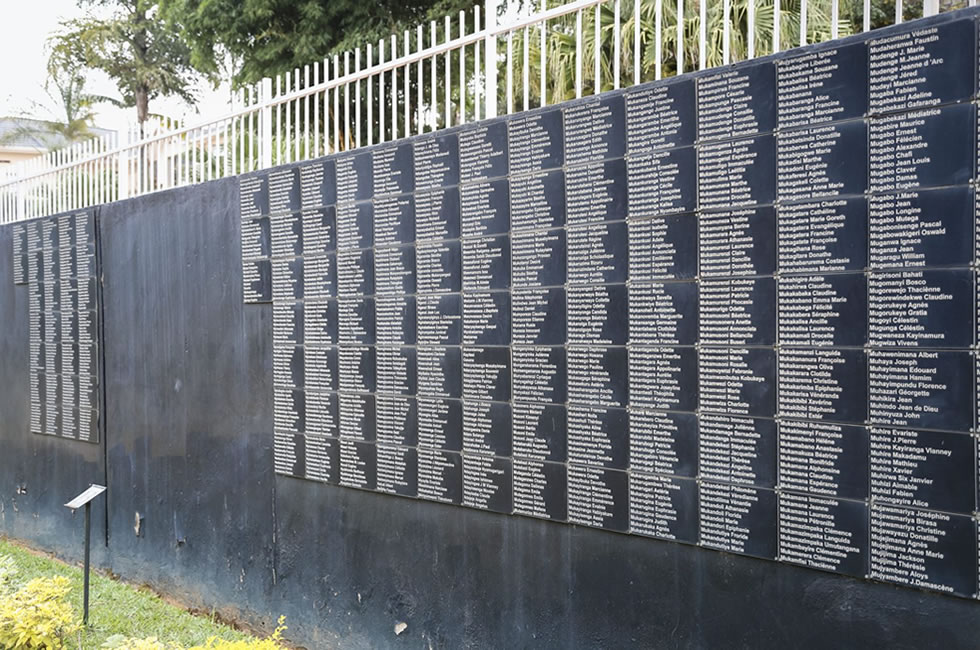
Dark Tourism – Visit Rwanda’s Genocide Memorials
Most Rwanda safaris start and end in Kigali a home to one of the most visited Rwanda genocide site –Kigali genocide memorial and tourists make it a point to stopover in memory of the Rwanda brothers and sisters who perished in just a period of 100 days either at the beginning of their Rwanda tours or at the end. It’s a great experience when one gets to the Rwanda early and is looking at starting a scheduled adventure the next morning, besides it’s a no time activity for both morning and afternoon without exceeding 4.00pm the closing time. Hundreds visit different Rwanda genocide sites but few visit Murambi because the remains of the victims still look fresh and scare a lot. The 1994 human slaughter incident claimed lives of thousands into more than the eight Rwanda genocide memorials found in different locations of the country.
Despite the past Rwanda is the safest country in Africa with variety to explore and enjoy in the world of travel. Millions come from all over the globe to discover the countries attractions including mountain gorillas, chimpanzees, golden monkeys, forests, lakes, mountains, landscape etc. While in Rwanda tourists enjoy connecting to neighboring countries for other tour holidays. Tracking low land gorillas, the unique chimpanzees and also climbing the live volcanoes, Nyinamulagira and Nyiragongo are the most desired in Congo while gorilla tracking, wildlife viewing, viewing might falls, white water rafting , bungee jumping are the reasons as to why Uganda some explore Uganda as well. It’s not a wasting time to do same tour activity in two different countries because the experience can never be the same. If not contented try asking tourists who enjoy tracking mountain gorillas in Rwanda & Uganda or Rwanda and Congo or Uganda and Congo.
Travellers to Rwanda end or start and end with a visit to at least one of the genocide site as a way of respecting the culture of the country visited. it’s sad but the experience is worthy because looking at the traditionally preserved remains of victims shoe you the situation in which they were killed in for example the woman whose one arm is in the face and others off a true sign of defense and some have cracks on skulls a thing which portrays brutal murder with no mercy. Remains where collected in different rooms and as the survivors open for you different preserved remain sections for a glance. No camera or video is allowed inside any memorial and entrance is free.
Many hold grapes as they visit different sections of the memorials because the silence and remain displays break travellers and others end up seeing tear drops rolling out of their eyes due to mercy and sympathy of the victims. With the tight schedules and the many attractions you intend to visit while in Rwanda spare a minute for our brothers and sisters who perished for no reason. However who visits the one of the Rwanda genocide memorial learns to live in peace and also respect the life of fellow humans. Though no fee is required but a giving heart receives even more.
Read More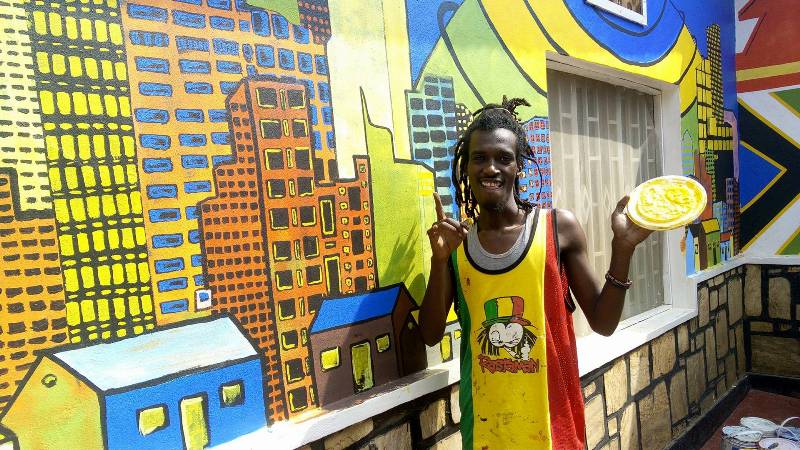
Ntagara’s Passion for Nature gives Birth to Kigali’s Newest Art Centre
The question most people often ask: what’s the connection between art and environmental conservation?
For Djamal Ntagara, the answer is quite crystal clear: there are numerous ways to conserve our nature, but art is among key methods which help people feel the significance of helping protect the planet.
Through the power of true pieces of art, he says, the viewer’s eyes open and appreciate beauty and, through this, the wonderful uniqueness and preciousness of our fauna and flora.
He adds that art not only provides the visual beauty but also a therapeutic sense of serenity; connecting emotions through interpretation of what you see in any particular piece of art.
The love for conserving the environment and culture is the inspiration behind the founding of another art center by Ntagara, known as Kaanyaburanga Art Center. This new addition to Kigali’s ever burgeoning art scene is located in Sonatube, right behind the Classic Hotel in Kicukiro.
Ntagara, 27, says the new art center is going to be officially opened late in march with initial three members. The others are Mike Katihabwa, a Burundian artist who escaped from the conflict-ridden country in 2015 during the elections-related violence and is now living in Kigali. The other one is Neza Shemsa, a youthful female artist known for her “touristic” paintings depicting wildlife and culture.
When you set your foot right into the new art center, what Ntagara says about his love for nature immediately confronts your eyes. At the verandah of this former residential place he has now been transformed into an art center, you find different types of flowers planted on discarded objects that he says he “raised from the dead and breathed life into them.”
For instance, we know that a junk computer belongs to the scrapyard. However, Ntagara is now growing blooming pieces of flowers from an improvised flower “pot” on a junk computer monitor he says he retrieved from his father’s house.
“The computers were dead, and my father wanted me to throw them away. But instead, I removed their insides, filled up soil in the shell of the monitors, and painted them in attractive colours from where I planted the flowers,” he says.
He used other parts of the computers like the motherboard to make installation art that hangs attractively on the walls of the gallery.
The other pieces of discarded materials he used as flower pots include used jerrycans and other used objects.
An installation art depicting a fish is made from discarded toothbrushes, toothpaste tubes that he says he collected from his father’s garden when he wanted landscape the garden with flowers. The pieces are embedded on a 170 x 40cm wooden piece. He uses saw dusts to make some features of the fish like the head and tails, but gives it a bluish and attractive background.
Another exquisite of installation art is found on the walls of the main gallery where he collected different coins from different countries, several discarded keys and seashells and glued them on a square piece of wood to make a wall clock.
“This piece of art is priceless and I can’t sell it for a farthing or a fortune. Instead, I’ll one day donate it to a museum because it represents some part of our history from the materials used,” says the artist.
Apart from the main gallery located in the former sitting room of the residential building, another room is going to be a place they are going to display masks, banana lampshades, bracelets and jewellery made from the center and others brought in by other artists for display and sales.
For his love of culture, Ntagaara explains that he plans to hold monthly cultural events at Kaanyaburanga that will bring the old and the young together to share their different perspectives and experiences.
“Our culture is dying because the youth today miss the opportunity to learn from the old. However, we need to come together and share our history to preserve our pristine culture. We are going to create that opportunity here at the center,” he adds.
Ntagara says he’s happy to collaborate with artists who share his passion for the love of nature and culture like Katihabwa and Neza. “The creation of the art center has provided me with the opportunity to express what’s within me and to fulfill my dreams of being a conservation artist. I am working with these youthful artists who share my passion to fulfill this dream,” he says.
Ntagara formerly worked at the now defunct Uburanga Art Center in Kimihurura before founding the new art center.
Read More